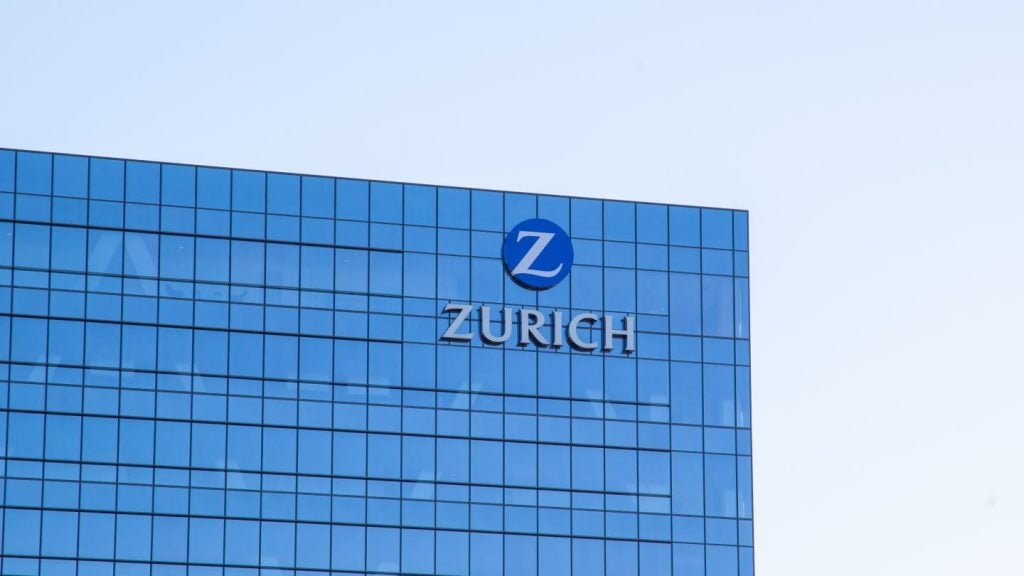The Malaysian life insurance segment is
expected to register growth at a compound annual growth rate (CAGR)
of 7.5% between 2012 and 2016, rising from MYR21.1bn ($6.6bn) in
2011 to MYR30.3bn in 2016, making it one of the most promising
markets in Southeast Asia.
This is the clear message from the Insurance
Intelligence Center’s latest report on the Malaysian life insurance
market, Life Insurance in Malaysia, Key Trends and
Opportunities to 2016.
Malaysia’s government has identified the
insurance industry as one of the key contributors to the country’s
economic growth.
It aims to increase the contribution of life
insurance to 4% of GDP, with its penetration reaching 75% by
2020.
The government has launched various
initiatives through its nationwide economic transformation
programme.
The introduction of the employee insurance
scheme, which provides basic low-premium term life
insurance with optional critical illness and
hospitalisation benefit coverage, will contribute
to the growth of the segment.
The microinsurance scheme under 1Malaysia
Micro Protection Plan has also contributed to the increase in life
insurance penetration rate.
This scheme offers a basic protection against
death and disability as well as hospital income, with premiums as
low as MYR20 per month.
In addition, private pension funds for non-EPF
(employers provident fund) and self-employed people, which
supplement the current public pension schemes, have contributed to
the growth of the life insurance segment in Malaysia.
Government input
These government initiatives have encouraged
Malaysians to consider the value of life insurance, and are likely
to provide a strong foundation for the sector’s growth.
For example, the government last year
increased the limit for income tax deduction for life insurance
with retirement benefits from MYR6,000 to MYR7,000.
This demonstrates its favourable attitude
towards life insurance policies as part of additional retirement
benefits, which will also lead to reduced dependence on social
security.
This incentive is expected to support the
development schemes of life insurers, with the country’s aging
population being a key consideration.
Malaysia’s life insurance penetration rate was
2.54% in 2011, which was lower than other advanced Asian countries,
such as Singapore’s 7.9%, Taiwan’s 13.9% and South Korea’s
9.1%.
As consumer awareness rises, with government
encouragement, the density and penetration rate is expected to
increase, fuelling growth in the life insurance segment over the
forecast period.
Macroeconomic growth is expected to drive the
demand for life insurance from 2012 to 2016. In 2010, the Malaysian
economy registered its highest annual growth rate, of 7.2%, since
2000. It grew by 5.1% in 2011.
The Malaysian government’s substantial
investment programmes, and explicit goal to double per capita GDP
to turn Malaysia into a high-income country by 2020, are expected
to drive demand for life insurance.
Malaysia: Premium By Category 2011

Source: Timetric
Saving for the future is also becoming
important for Malaysians because of rising employment opportunities
and reduced unemployment.
People aged above 60 are expected to account for 10% of the
total population in 2020 and 15% of the total population in 2030,
which will encourage people to take out additional life insurance
for their retirement.
The fragmented nature of Malaysia’s nonlife
and personal accident and health insurance segments allows small
insurance companies to successfully operate their business and
generate a reasonable market share.
Furthermore, implementation of tax benefits
for private pensions and worker insurance schemes has encouraged
the country’s citizens to take out individual life, individual
unit-linked and individual endowment insurance policies.
Channels
Agencies and bancassurance channels play a
major role in distributing insurance policies, with these two
channels accounting for a combined 65.5% of the industry’s total
premiums in 2011.
In recent years, banks and their insurance
subsidiaries have been the leading distribution channel in the
Malaysian life insurance segment.
From 2007 to 2011, banks expanded their branch
networks in semi-urban areas, and life policies based on personal
loans also led to an increase in life insurance premiums generated
through this channel.
As this trend continues, bancassurance is
expected to further increase its share over the forecast period,
driving growth in the segment as the percentage of the population
with access to formal banking channels increases.
In order to remain competitive, insurers are
predominantly focusing on utilising traditional distribution
channels and establishing affiliations with the country’s leading
banks for providing bancassurance services.
Distribution
In terms of healthcare, Malaysia offers one of
the region’s highest standards and is a preferred destination for
medical tourism.
It generated $125m in 2010, after receiving
392,956 medical tourists during the year. Although the country does
have public healthcare facilities, the majority of the population
prefer to visit private hospitals due to the inadequate patient
capacity and service quality of public health facilities.
Growing consumer awareness about healthcare
and the increasing cost of private healthcare is
expected to drive the growth of the health
insurance category.
To make life insurance more popular and
effective, many companies have packaged it with medical benefits.
Household healthcare costs increased at a CAGR of 14.8% during 2000
to 2010, encouraging Malaysians to purchase life insurance and with
medical benefits.
Policies with supplementary savings elements
are also expected to drive the segment.
Market breakdown
The industry has gradually evolved from
offering only risk protection products to investment-related
products.
Unit-linked products, introduced in 1998 by
foreign insurers, have gained popularity. These products are
popular as they offer a combination of life insurance coverage and
investment, which offers higher returns than normal deposit
rates.
This has led unit-linked insurance products to
reach a dominant position in the segment,
with the overall premium income accounting for
29.9% of the total life insurance premium
income in 2011.
Higher life expectancy was a key driver of
growth of the segment during 2007-2011.
Life expectancy is used to calculate the
premium to be paid by policyholders when purchasing
a life insurance policy.
In 1957, the average life expectancy of a
Malaysian male was 55.8 years, and for females 58.2 years. In 2011
it has reached 71.9 years for men and 76.9 years for women, and by
2050 it is expected to increase to 77 and 82 years
respectively.
Insurers will need to provide medical plans to
cover policyholders beyond the current life expectancy, which will
contribute towards the continued growth of the segment.
The introduction of life insurance as a
supplementary savings method, which ensures alternative retirement
income besides the EPF, also boosted the industry.
The Malaysian life insurance marketplace is
highly concentrated, with the top 10 insurers accounting for 88% of
business in 2010 and the remaining 12% divided among six life
insurers.
Domestic life insurer Great Eastern Life
Assurance led, with a market share of 26% in 2010, followed by ING
and International Assurance Bhd AIAB with 15.2% and 11.8%
respectively.
The three accounted for a market share of 53%
in 2010.
Overall, there are 16 life insurance companies
in Malaysia, including composite insurers, and several are partly
foreign-owned.
The life insurance segment is more crowded
than the non-life segment, and accounted for 59.3% of the country’s
insurance industry in 2011. In terms of gross written premium, the
life insurance segment reached a market size of MYR21.1bn in 2011,
with a CAGR of 9.7% during the period.
The Life Insurance Association of Malaysia and
Bank Negara Malaysia (BNM) are the regulatory authorities that
regulate and promote the growth of the market.
A new set of valuation rules has been
introduced to ensure that assets and liabilities are valued
in a realistic and market-consistent
manner.
Regulatory changes
Between 2007 and 2011, BNM proposed key
regulatory changes to support growth, including the risk-based
capital framework, which came into effect in January 2009.
The capital requirements provide greater
flexibility for insurers to operate at different capital
adequacy levels, proportionate with their risk
profiles.
Malaysia’s plan to model its accounting
standards in accordance with the International
Financial Reporting Standards 4 is also likely
to impact the country’s life insurance market.
Phase I of IFRS 4 was introduced in 2010. This
will increase transparency in insurance
accounting. The revised set of accounting
standards is expected to be implemented completely by 2013.
With this, insurers are expected to face the
challenges of adopting more sophisticated regulatory requirements
in solvency, risk management, governance and disclosure.
For more information on the report,
contact the Insurance Intelligence Center on +44 (0)20 7406 6596 or
info@insurance-ic.com
Malaysia facts
and figures
- The Malaysian life insurance segment lost
MYR0.18bn ($56.6m)in 2007 to fraudulent claims
- This increased to MYR0.25bn in 2011, after
registering a CAGR of 8.3% between 2007 and 2011
- Total value of assets for Malaysian life
insurance grew from MYR102.5bn in 2007 to MYR151.2bn in 2011, at a
CAGR of 10.2%.
- The life insurance density and penetration
increased marginally from 2.26% of GDP in 2007 to 2.54% in
2011







